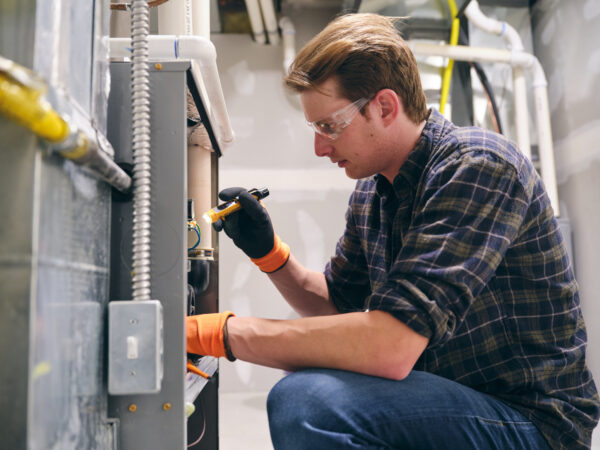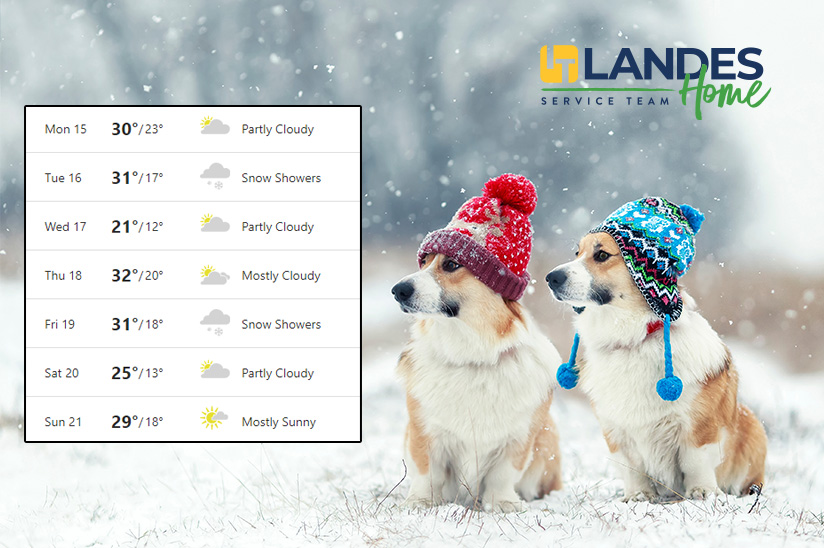Temperatures are going to be low in Bucks and Montgomery Counties this winter! IT Landes…

A furnace is a heating system that works to generate and distribute hot air throughout a home. Furnaces are some of the oldest heating units used today in commercial and residential buildings. They burn fuel internally to warm air and direct the warmth to the whole house to create a comfortable indoor environment. Older models used coal and wood as fuel, but present-day furnaces are fueled by electricity, propane or natural gas to produce heat and are highly efficient. Many furnaces differ in functionality, but the basic operation is the same in all models. As a homeowner, it is important to understand how your furnace works as it helps you make informed decisions concerning installation, repair and maintenance.
Understanding the Heating Cycle
When the furnace is turned on, it undergoes a sequence of operations to produce hot air. The heating cycle begins when the thermostat activates the furnace, which detects a temperature drop below the level set on the controller. A call for heat is then initiated to your furnace by the thermostat. In older models, the pilot light is always lit and provides initial fuel to the burners in the furnace. Other systems will have an ignition spark that resembles the spark plug used in cars. Modern systems utilize hot surface ignition to light the fuel. Electric furnaces have heat coils instead of propane or natural gas, which start to heat up. Regardless of the type of furnace in your home, ignition will begin at this point, and the production of heat begins.
Gas is driven to the burners when the gas valve is opened in a gas furnace. Heat is created through air combustion, where the fuel ignites the intake air. The burner has a flame sensor on its opposite end, which monitors it to ensure proper functioning. The flame sensor determines if a flame is present to prevent gas leaks and probable fire in case the furnace runs without fire.
A venter motor then pushes the produced heat to the heat exchanger at a controlled rate. The motor runs for a predetermined time, depending on your home’s heating requirement. Cold indoor air is pushed into the system via a separate vent toward the heat exchanger. At this point, the heat exchanger warms up this cold air to the desired temperature. The circulating fan turns on to move the hot air through the vents and ductwork and circulate it around your home. The air is cleaned by passing through a filter that traps dust and debris.
The excess heat not transferred to the ductwork is vented through a PVC pipe directed outside or a chimney flue. The system exhaust has vent pipes to eliminate the harmful by-products from combustion into the outdoor environment. The process will repeat continuously by pulling cold air into the exchanger until the set temperature on the thermostat is attained. When the temperature is achieved, the furnace powers down and will activate again only if the temperature drops or thermostat controls are changed.
Parts of the Furnace System
The furnace is a system with many components working together to provide comfort in your home. Understanding how the components operate together is a crucial step to a better understanding of the workings of the whole system.
Thermostat
This is an electronic device that senses and measures the indoor temperature, which controls the furnace by regulating its heating cycles to maintain the desired temperature. A thermostat is the main control component in a heating system since it switches the heating devices on or off. The thermostat is installed inside the house and is usually hard-wired directly to the furnace.
Control Board
This is the circuit board that receives various electrical signals from interior and exterior furnace components. It interprets these signals and sends out responses to cause some actions, like turning the burners on or off, opening or closing the gas valve, or starting the blower fan.
Burners
A burner is a device used to create a controlled flame and works by mixing the fuel gas with air to allow combustion. The flame produced is generally used as a source of heat. Burners have a much hotter flame than just igniting the gas, making them more efficient.
Igniter
It is a device whose purpose is to light the gas from the furnace burners. A furnace igniter creates a spark and causes the ignition of the furnace.
Blower Fan
The blower fan is an electric fan attached to a motor that distributes warm air from the furnace throughout the house using ductwork. In addition, a blower fan also circulates the air when cooling is needed. Having a compatible cooling and heating system is critical in any home.
Heat Exchanger
The heat exchanger comprises a series of hollow metal tubes that help to separate the intake air from the combusting mixture. The heat exchanger transfers heat to the cold air before it is directed into the home. It is located at the beginning of the burner assembly and spans to where the chimney vents connect to the furnace.
Air Filter
The filter cleans the air coming to the furnace from around the house and the hot air leaving the furnace. It ensures efficiency and long-term safety by keeping dust and dirt particles out of the furnace.
Plenums
A supply plenum is a compartment located after the heat exchanger that is first filled with air before distribution begins. It is an air chamber that fills and holds air for a short period to increase its pressure. The air ducts are connected directly to the furnace plenum to circulate this air throughout the home. The return-air plenum also has the same function, containing cold air waiting to be heated.
Types of Furnace Models
Furnaces have different variations in terms of construction and parts between models and brands. Two types of furnaces are installed in homes: single-stage or two-stage.
A Single-Stage Furnace
These furnaces work on one single speed, thus acquiring the name single-speed burner. It means that the gas valve responsible for directing gas to the burner operates with only two options, on and off. A single-stage furnace distributes heated air continuously throughout the home at its working capacity.
Two-Stage Furnace
A two-stage furnace uses a three-position valve system, which increases the overall efficiency and performance. The valves operate either partially or fully closed. Therefore, the furnace works at two separate speeds and operates more efficiently. The partially closed state works well in colder climates and always runs at one-third of the capacity. When the temperature drops, this heating state becomes ineffective, and the furnace switches to a fully closed system to produce additional heat. Two-stage furnaces are energy-efficient and are the most common furnaces used in homes.
Reach Out for Help Today
Learning how your furnace works sounds simple, but they have many different parts and components to produce heat and distribute it smoothly while maintaining safety. Knowledge of how your machine works will help you diagnose problems affecting the furnace and the appropriate repairs needed. With our qualified technicians, IT Landes offers heating, cooling, plumbing, fuel oil, clean air and safety services for both homes and businesses. Contact IT Landes for more information regarding our services.


